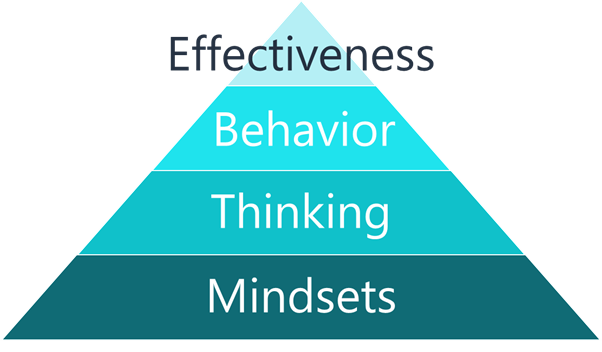ATD Blog
3 Steps to Elevate Your Executive Team to the Next Level
Wed May 10 2023


“In order for us to reach our goals, our executive team needs to operate at a higher level.”
As leadership development consultants and executive coaches working with leaders worldwide, we commonly speak with executives about the development goals they have for their teams. These conversations generally start with statements like the one above and quickly follow with the leader’s concerns about what’s holding the organization back from reaching the next level of performance.
The most common concerns are:
My team comes to me to solve their problems. They do not work things out independently.
My team manages in silos. They do not collaborate well cross-functionally.
My team members worry about individual results. I want them to think about the total enterprise more strategically.
My team is too involved in doing the work when I want them to lead their team and facilitate success.
To elevate our teams to perform at a higher level, we need to go below the “thinking level.”
It Starts With MindsetsA team’s performance is a result of individual members’ behaviors. Their behaviors are driven by their thinking. And their thinking is driven by their mindsets. Commonly, when leaders try to improve their team’s performance, they tend to focus on improving the behaviors and skills of the group without addressing the underlying factors driving their behaviors.
As consultants and coaches, we get to help reframe the development challenge and share an opportunity for the improved effectiveness they seek.
The secret to resolving the concerns above and elevating a team is to help leaders reach the mindset level. As leaders’ mindsets improve, the dominos of improvement start to fall: improved thinking, improved behaviors, and improved performance, and these improvements trickle down to the team.
There are three steps to begin the development process.
STEP 1: Acknowledge the role of mindsets in performance.Many leaders continue to look at behavior and work to elevate performance by telling their teams to stop doing what they don’t want to see and start doing what they want to see. This misses the opportunity to address the root cause of behaviors.
By acknowledging the role of mindsets in performance, leaders can pursue a new way to support and develop themselves and their teams. Most programs focus on horizontal development, which focus on improving skills and knowledge. Horizontal development does not address mindsets, so it leaves executives and their teams wondering why they struggle to reach “the next level.” Lasting effectiveness is not as simple as telling someone to stop doing something or start doing something else. Our mindsets and thinking are what drive behavior; that must be the starting point for the lasting elevation of performance.
When leaders acknowledge the role of mindsets in driving improved performance, it opens the door to pursuing vertical development. Vertical development is defined as elevating leaders’ abilities to make meaning in more cognitively and emotionally sophisticated ways. To begin this process, we must start by assessing leaders’ and teams’ mindsets.
STEP 2: Create awareness by assessing leaders’ and teams’ mindsets.After we acknowledge the importance of mindsets, we assess the leader’s and team's mindsets. This helps establish a baseline and provides direction on the mindset shifts needed to think and operate at a higher level.
There are many assessments to evaluate mindsets. The ones we use in our work are a vertical development assessment and a mindsets assessment. These offer the opportunity to understand the baseline mindsets affecting thinking and behavior.
To understand how to improve mindsets, we must recognize that (1) our mindsets are neural connections, (2) neural connections are a lot like muscles; the more we use them the stronger they become. Thus, if we want our teams to elevate their mindsets, we must help them regularly exercise their positive mindset neural connections. Research reveals that this can be done in as little as five minutes a day on a consistent basis.
STEP 3: Build a development plan.Once the role of mindsets is defined and mindsets are evaluated, we can help identify the areas where mindsets may affect leadership and performance effectiveness. This information helps create a development plan to build new neurological connections in support of more productive mindsets.
These plans consist of working independently on targeted mindset development activities three to four times per week for about 10-20 minutes each training session. The plan may include reading books and articles, watching videos, listening to podcasts, and engaging in discussion, meditation, and journaling, all focused on elevating mindsets. These activities allow leaders to develop new pathways in their brains to support mindsets that facilitate success.
The next time you receive a request to help take an executive team to the next level, you can share the pyramid structure from this article and ask to look more closely at the team’s mindsets. As you redirect the focus to mindsets and assess the current state, work with the executive team members to improve at the most foundational levels. As the foundation improves, so will all other elements above it. Stated simply, if you want to take your executive team to the next level, you must focus on mindsets.
If you would like to learn more about supporting executives in their development, please join us at our session at the ATD Conference in San Diego on May 21. You can register at here.
